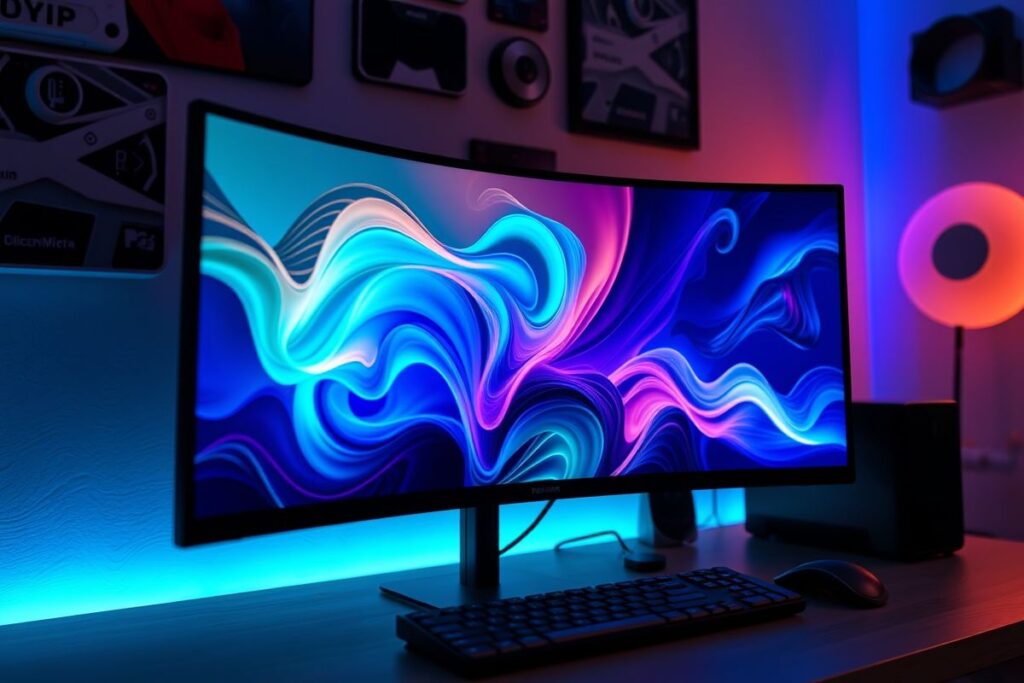Why OLED Is Worth It, Even for a Low-Budget Gaming Rig
For years, PC gamers on a budget have had to make tough choices. Do you prioritize a powerful GPU or a high-refresh-rate monitor? Do you sacrifice visual fidelity for more frames per second? OLED technology, once a luxury reserved for high-end setups, is now becoming increasingly accessible, offering a compelling reason to rethink those compromises. Even with a modest gaming rig, an OLED display can significantly elevate your gaming experience, delivering stunning visuals and responsive performance that can rival much more expensive setups. This article delves into why investing in an OLED monitor is a smart move, even if you’re working with limited funds.

Unparalleled Visual Quality on a Budget
The Power of Perfect Black
OLED’s greatest strength lies in its ability to produce true black. Unlike traditional LCDs that rely on backlights, each pixel in an OLED panel emits its own light. This means that to display black, the pixel simply turns off completely. The result is an inky, infinite black that adds incredible depth and contrast to games. Shadows are richer, dark scenes are more immersive, and colors appear more vibrant thanks to the absence of backlight bleed. This level of visual fidelity is simply unattainable with even the best LCD panels.
Imagine exploring the dimly lit corridors of a horror game, where the darkness feels truly oppressive and every shadow hides potential danger. Or picture yourself soaring through a vibrant fantasy world, where the colors pop off the screen with breathtaking intensity. OLED brings these experiences to life in a way that no other display technology can match, even on a budget-friendly system.
With OLED’s perfect black levels, even less graphically demanding games take on a new level of visual richness. Details that might be lost in the murky greys of an LCD panel are clearly visible on an OLED, adding depth and nuance to every scene.
Exceptional Color Accuracy and Vibrancy
Beyond perfect blacks, OLEDs also boast exceptional color accuracy and a wider color gamut than most LCDs. This translates to more realistic and vibrant colors in games, making everything from character models to environmental details look more lifelike. Whether you’re exploring a lush jungle or battling in a neon-lit cityscape, OLED brings the world to life with stunning clarity and vibrancy.
Many budget-friendly OLED monitors now offer HDR support, further enhancing the color range and contrast for a truly immersive experience. This means brighter highlights, deeper shadows, and more nuanced color gradations, bringing a level of realism to your games that was previously only possible with high-end displays.
The improved color accuracy also benefits competitive gaming, allowing you to easily distinguish between different elements on the screen, giving you a slight edge in fast-paced action.
Superior Motion Handling
OLEDs have incredibly fast response times, typically much faster than even the best LCDs. This results in significantly reduced motion blur, making fast-paced games look smoother and more responsive. Whether you’re dodging bullets in a shooter or racing through tight corners in a driving simulator, OLED ensures that the action stays crisp and clear, giving you a competitive advantage.
The near-instantaneous pixel response times also contribute to a more immersive experience, eliminating the distracting ghosting and blurring that can occur with LCDs, particularly in fast-paced scenes.
This improved motion handling is a game-changer, especially for gamers who prioritize responsiveness and fluidity in their gameplay. Even with a lower frame rate, OLED’s superior motion clarity makes the experience feel smoother and more enjoyable.
OLED vs. Other Display Technologies
Comparing OLED with IPS and TN Panels
While IPS and TN panels have their strengths, particularly in terms of affordability, they simply can’t match the overall visual quality and responsiveness of OLED. IPS panels offer good color accuracy and viewing angles, but they suffer from backlight bleed and limited contrast ratios. TN panels are known for their fast response times, but they often have poor color reproduction and limited viewing angles.
| Feature | OLED | IPS | TN |
|---|---|---|---|
| Black Levels | Perfect Black | Moderate | Poor |
| Response Time | Excellent | Good | Excellent |
| Color Accuracy | Excellent | Good | Poor |
| Viewing Angles | Excellent | Good | Poor |
This table clearly illustrates the advantages of OLED technology over traditional LCD panels. While IPS and TN panels offer certain benefits, OLED excels in the areas that matter most for immersive gaming: black levels, response time, color accuracy, and viewing angles.
Even budget-oriented OLED monitors outperform many higher-priced IPS and TN displays in terms of overall visual quality and responsiveness. This makes OLED a compelling option for gamers looking to maximize their visual experience without breaking the bank.

Leave a Reply